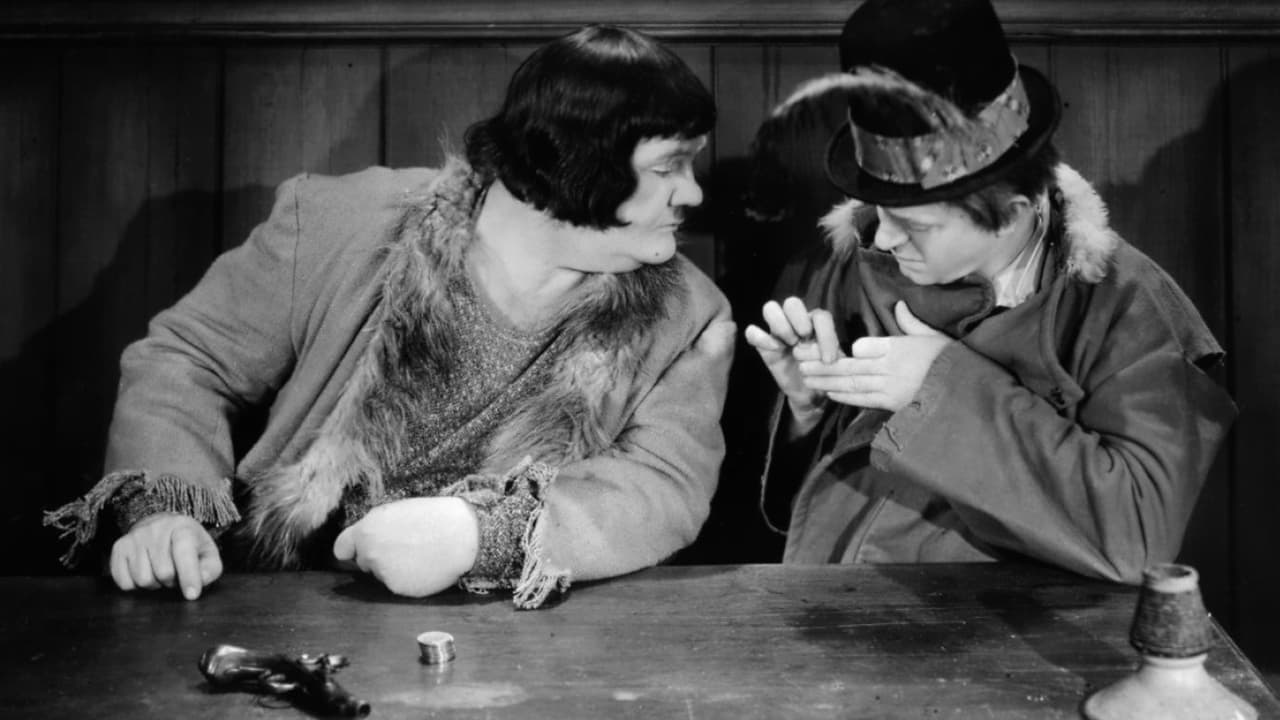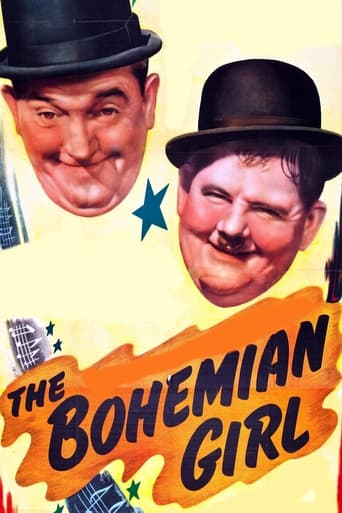


While quite stunning to look at with exquisite sets, lavish costumes and some beautiful snowy photography, at times this seems just too long even though it's got a full length plot line and a few musical numbers to pad it out. Oliver is married to the cheating Mae Busch who kidnaps a princess then runs out on Oliver anyway, leaving the young girl (Darla Hood as a child, Jacqueline Welles as a young lady) to be raised by Oliver and his sidekick, Stan Laurel.Moving from shorts into features full time, Stan and Ollie were lucky to have material that could be extended into a full plot line. They had done a similar situation before in the 1933 full length operetta "Fra Diablo", so this needed a fresh take on an old story, having been based upon an opera itself. I would have loved a dance number with the gypsies, as the songs aren't all that memorable. Heading into the Little Rascals series, Darla Hood manages to be cute without being cloying, something that left me cold to her in the shorts. The future Julie Bishop really has nothing substantial to do as the older young lady. Of the supporting players, Busch is a convincing shrew, while James Finlayson is funny with his double takes as a palace guard. The lovable Zeffie Tilbury is, as always, a delight as the gypsy queen, while Mitchell Lewis deliciously sinister as her son. Silent star Antonio Moreno is sensuous as the roving gypsy whom Busch carries on with in front of her own husband. It's pretty enjoyable, but I found myself more entranced by the setting and technical aspects of the film than the actual movie as a whole. Be forewarned, a scene of Stan sawing bars is like nails down a chalkboard.
... View MoreHollywood could never make this movie today in this way. The Laurel and Hardy scenes, and they are funny, are simply inserted between scene of a very sincere, if corny, production of Balfe's then still popular Bohemian Girl. It never occurs to the director to make fun of this folk opera, which must have taken real restraint, as it is at its best quite corny and could easily have been made fun of. But Roach doesn't. When Eileen sings the big number, "I dreamt that I dwelt in marble halls," the focus is on her and nothing ridicules what was then still a popular number in pops concerts.That's what fascinated me about this picture. Yes, as with the Marx Brothers'A Night at the Opera those with no interest in opera or its performance history will see the operatic scenes as just annoying filler. But for those of us who do have an interest in such things, it's very interesting to see that there was a time when Hollywood could present opera, even not very good opera, in a sincere and straightforward fashion, relying on the audience to enjoy those segments for what they were.Yes, this is another example of Laurel and Hardy, and an enjoyable one. But it is also a sort of document of how a certain type of opera was once performed and appreciated, and that is not negligible.
... View MoreI disagree that this is the worst Laurel & Hardy film, but it is not their best either. The plot is simple and tedious with uninspired music, but the moments with Stan & Ollie still sparkle with crisp routines and character relationships. Stan's magic tricks are a real delight and Ollie's conflict with Mae Busch are classic. If you want the worst - check out "Utopia" - that's sadness personified.
... View MoreWhat a good thing it is that Laurel and Hardy movies are not open to great critical debate. That way, you don't have to worry that The Bohemian Girl isn't one of their better efforts. We don't have to argue that, as with the fitfully amusing Swiss Miss, the operatic elements fail to gel and should have been removed. Yes, as a music-free short this would have been vastly superior, but so what? Laurel and Hardy aren't satirists; they don't indulge in Freudian critiques or social commentary, and all the better for it.Their brand of simple, slapstick fun is submerged, but if you can wade through the irrelevant gypsy sequences then it's there, just as funny as ever. Just the simple things, like Ollie smacking himself in the face with a potato, or Stan asking a town crier ("Nine o'clock and all's well") "Say, could you tell us the time?" then following it up by nicking his bell.An unusually portly Stan here gets to do something I've never seen him do before break the fourth wall with an Ollie-style double take to camera. Look at the scene where Stan steals a wallet, backflips it to Ollie with not a single look back, and Hardy catches it in his hat and curves it back onto his head all in one fluid motion. This is the first Laurel & Hardy film I'd seen since the apocryphal Bronson Pinchot/Gailard Sartain version, For Love Or Mummy. This only serves to heighten appreciation of how good the real duo's timing was.It is weird seeing the two as conmen, but they're still as likeable as ever. Stan even gets to do the "floating finger" routine. Other elements quite racy for 1936 include adultery and child abduction. Yet great visual gags abound "Give me part of the banana" orders a bossy Hardy before Stan hands him the skin. There's even some surreal stuff, like Stan's female/deep singing voices and his stretchy ear. Okay, both of those are throwbacks to Way Out West, but if they work, why not use em? A classic four-minute scene has Laurel getting inadvertently drunk while trying to fill bottles of wine.The somewhat overbearing opera fixations are even punctured by a Stan who eats Ollie's breakfast because he doesn't know how long a song will take to finish. There's even room for James Finlayson to get in on the act.Yes, The Bohemian Girl isn't Laurel and Hardy at their best. Yet when even their average films are this funny, then who cares?
... View More